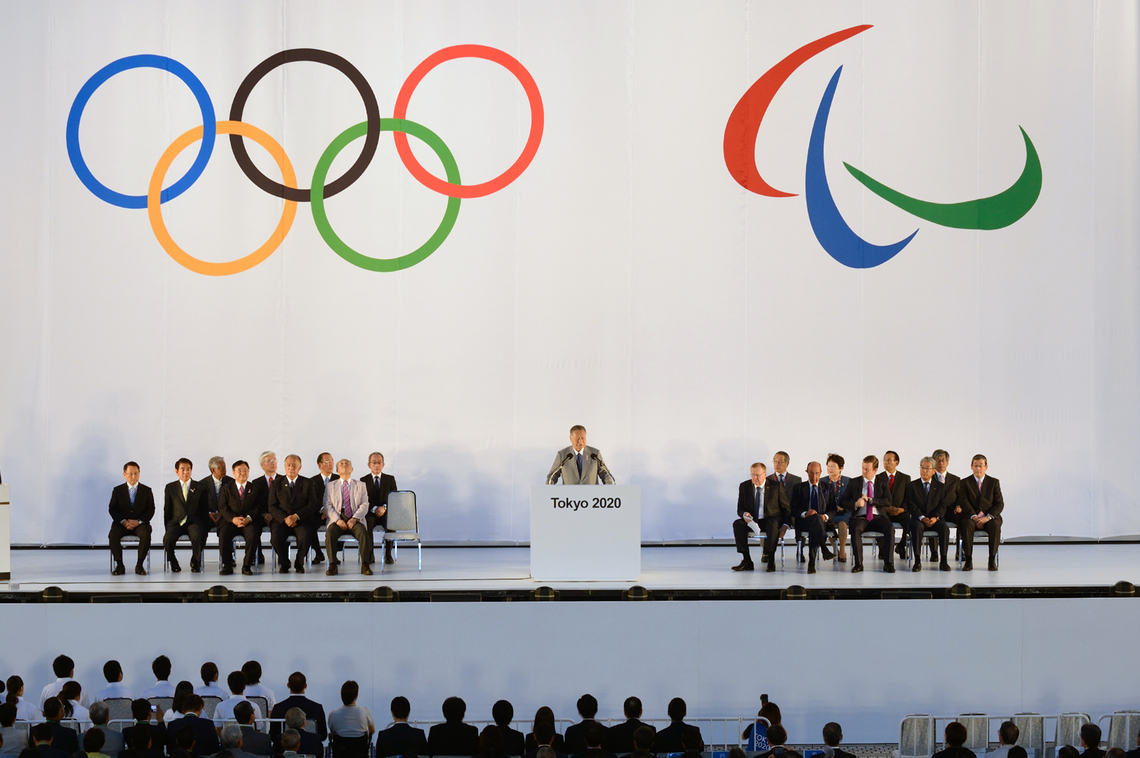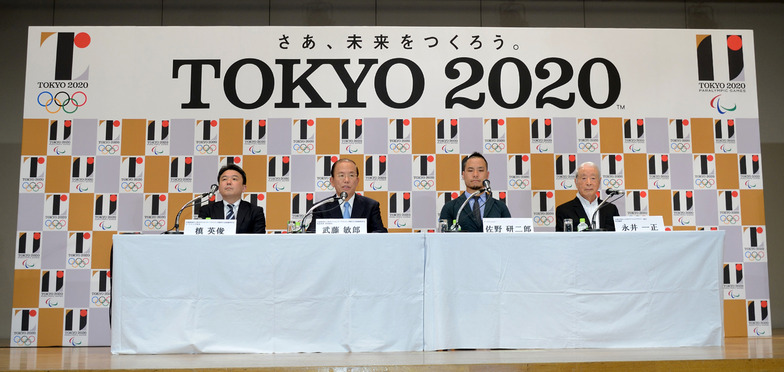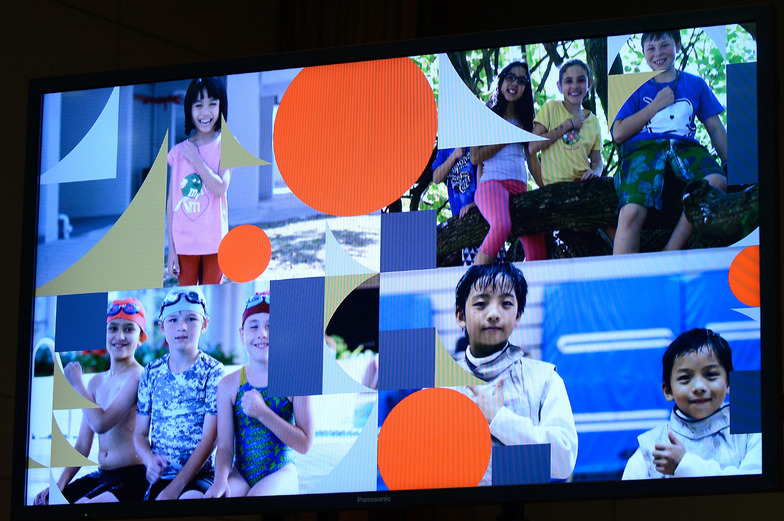Note: This website was automatically translated, so some terms or nuances may not be completely accurate.
Tokyo 2020 Games Under this emblem
On July 24, five years before the opening of the 2020 Tokyo Olympics, the official emblem for the Olympic and Paralympic Games was unveiled.
A large crowd gathered at the Tokyo Metropolitan Government Building's Citizens' Plaza in Shinjuku, the announcement venue. They watched the moment alongside key figures including Mori Yoshiro, President of the Organizing Committee; Governor Masuzoe Yoichi; Minister in charge of the Games Endo Toshiaki; IOC Vice President John Coates; and IPC Vice President Andrew Parsons.
As the curtain covering the wall of the Tokyo Metropolitan Assembly Hall was pulled back, the massive Olympic and Paralympic Games emblems were revealed, eliciting gasps from the audience.
The Olympic emblem was designed to represent the "T" in "Tokyo," "Team," and "Tomorrow," while the Paralympic emblem was inspired by the "=" symbol representing equality. The two emblems become identical when their white and black sections are reversed.


Chairman Mori stated, "We have truly waited eagerly for this day. The emblem will serve as a goal for athletes worldwide aiming for the Games and as a unifying banner for everyone involved. Let's all work together to create the best Olympic and Paralympic Games." Vice Chairman Coates added, "The most important thing is that it reflects the essence of a vibrant city and the welcoming spirit of its people. I believe this emblem will greatly influence the shape of future Olympics."
Also present at the venue were Hirotsugu Murofushi, Sports Director of the Organizing Committee; Mayumi Narita, a committee member; and young athletes from Olympic and Paralympic sports, all celebrating the emblem's unveiling together.
Following the presentation, a press conference was held at the Tokyo Metropolitan Government Building, attended by the emblem's designer, Art Director Kenjiro Sano. Sano was born in Tokyo in 1972. A graduate of Tama Art University, he currently serves as the head of a design company. He has received numerous awards, including the Mainichi Design Award, the New York Art Directors Club Gold Award, and the Cannes Lions Gold Lion.

For the emblem selection, an open call was held for individual designers representing Japan and abroad, receiving 104 submissions. A judging committee, chaired by Kazumasa Nagai (Special Advisor to the Japan Graphic Designers Association), selected three finalists, from which one was chosen as the candidate emblem. Following approval by the IOC, IPC, and the Organizing Committee, Sano's work was finalized as the emblem.
Organizing Committee Secretary General Toshiro Muto explained the design's concept: "Black" symbolizes diversity, representing that all colors combined become black; "the large circle" symbolizes harmony, representing mutual recognition of differences and cooperation; and "the red circle" represents the source of driving force, symbolizing the passionate heartbeat of people. He also revealed that with the emblem finalized, they plan to sell T-shirts, pins, and officially licensed merchandise, aiming to have the first batch of products ready in early October.
Sano stated, "My dream of designing an Olympic emblem someday has come true. While inheriting elements from the emblem of the beloved 1964 Tokyo Olympics, I expressed my vision for a new Games."


Was this article helpful?